It always sneaks up on me…
Breeding season, that is.
Compared to all the big ranches around us who have hundreds of cows to breed each year, I feel like pretty small potatoes with our two measly mama cows.
But still, if our cows don’t get bred, then we don’t have milk. Or meat. So yeah, it’s an important deal.
I know I’ll get this question, so I’ll answer it right off the bat: Yes, if you want the best quantity of milk and a new calf to sell (or eat) each year, you’ll want to plan on breeding your milk cow every year.
Once a milk cow (or goat or whatever) has a baby, they can continue on with their lactation cycle for years if they are continually milked (think supply & demand), but most folks prefer to breed each year, as it is generally the most economical way to manage a home dairy animal.
Although a cow can come into heat (aka start ovulating) very soon after calving, we prefer to wait at least 60 days (usually even a bit longer) before we breed her again, just to give her body a bit more time to rest and recover.
Oakley had her calves mid-May this year, and we just bred her last week, so that was about a three-month wait period.
We used artificial insemination (AI) to breed Oakley and our beef cow this year. I’ve received a number of questions about this, so I decided to dive in with a little more detail and pictures.
What is Artificial Insemination?
Artificial insemination is a very common practice in the agriculture world. It involves using collected semen to breed an animal, versus using a live bull (or stallion or buck or ram or whatever) to provide the breeding services. The semen is kept frozen in “straws” and then a vet or AI tech deposits it in the animal at the proper time, depending on their heat (ovulation) cycle.
Why We Used Artificial Insemination This Year
We’ve used bulls in the past and they are definitely a very viable option for homesteaders looking to breed their family milk cows each year. However, here are the main reasons we personally opted for AI this year:
- There are no local Brown Swiss bulls in our area. In the past, we’ve borrowed whatever bull we could find. Although this can work, we have decided if we are going to breed our animals, we want to produce the best stock possible. This means we are opting for a proven Brown Swiss bull to get high-quality Brown Swiss calves, rather ending up with a bunch of calves that are half Brown Swiss/half Angus/half Hereford, or whatever. Mixed-breed animals are fine for eating, but we’d like to have some nice heifers to sell to other families as quality family cows in the future.
- We don’t have the room or facilities to own our own bull right now, and that’d be kinda silly anyway, considering we don’t have a huge herd. We only have 67 acres with minimal cross-fencing, so trying to keep a big (sometimes aggressive) bull separate from the herd during certain times of the year could be interesting.
- Artificial insemination allows us to keep our bloodlines fresh. For example, Oakley had two heifers (girls) this year, and we will breed them next year. Even if we did find or buy a local Brown Swiss bull, we wouldn’t want to breed him to his daughters, so we’d be stuck in the same boat again next year.
- Artificial insemination is cost-effective and we have a number of very qualified AI technicians as neighbors. Someday I’ll learn how to do our own AIing, but for the time being, it’s pretty darn awesome to have such handy neighbors.
How to Detect Heat in Your Cow
The first step in the artificial insemination process is to determine when your cow(s) are in heat. Obviously, if you’re using a bull for breeding, he takes care of the detection. But since AIing removes him from the picture, figuring out when your cow is in heat is all on you. Timing is crucial, and if you miss this short window of time, you’re outta luck. Detecting heat can be super easy, or super hard, depending on your cow…
Cows come into heat on a roughly 21-day cycle, and can show some (or none!) of the following signs:
- Restlessness, agitation, or out-of-character behavior
- Calling (mooing) to other cows more than usual
- Clear mucous or discharge from her back end (if you see blood-tinged discharge, it probably means you’re too late and have missed the window)
- Swollen vulva
- Decrease in milk production (not always, but sometimes)
- Trying to mount other cows, and/or allowing other cows to mount her.
If you catch your cow standing still and allowing other cows (whether they be male or female) to mount or “ride” her, that’s usually the best indication. This is called “standing heat” and can be one of the most reliable signs your cow is in proper heat and ready for AI.
Ovulation usually happens towards the end of standing heat (approximately 12 hours). So, if we see a cow in standing heat in the morning, we usually won’t AI until later than afternoon or evening, and vice versa.
The tricky part? Some cows exhibit standing heat readily, while others do not… Also, if you only have one cow, it won’t work to watch for standing heat, since there will be no other animals to be interested in her. If that’s the case, you’ll want to watch closely for the other signs. Our steers (castrated male calves) work wonderfully for detecting standing heat. Obviously they cannot breed the cow, but have enough hormones to still be interested.
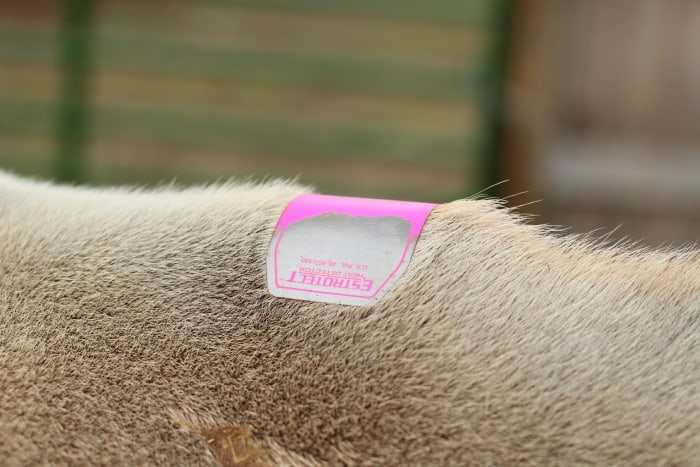
My secret weapon in detecting heat in our cows are these cool little patches. They stick onto your cows back and work the same way as a scratch-off lottery ticket. If another animal rides the cow, the silver part rubs off exposing the color underneath. This prevents me from having to sit out in the corral all day watching for standing heat. Although, I do still end up spending quite a bit of time out there checking patches anyway…
The AI Process
Once we detect the cow as being in heat, the clock starts ticking and it’s time to roll.
Our neighbor arrives with all his gear and the semen tank containing the straws we ordered ahead of time. Liquid nitrogen keeps it nice and cold.
He gets to work thawing the semen and preparing his equipment while we load the cows into our small log alley.
This is “Red Cow”. She doesn’t have a name because she isn’t super nice and I only like naming animals who are polite. See her shooting me death glares? She’s up first.
Up the alley she goes, and we secure her head into the head catch. It doesn’t hurt her in the slightest, but makes sure everyone (including her) stays safe during the super-short procedure.
You can see from the hot pink patch she was definitely in standing heat earlier. All the silver part has been rubbed off by the steers who were mounting her.
The semen is ready. Our neighbor puts one sleeved arm into the rectum. This will help him manipulate the cervix and guide the rod in.
He wipes off the vulva to keep things clean, then carefully inserts the insemination rod (containing the semen straw) and guides it through the vagina into the cervix where the semen is finally deposited.
The cow doesn’t mind the procedure in the slightest. And it’s over so quickly, they usually hardly even wiggle.
And that’s it. Kinda anti-climatic, huh? Now the waiting game starts again.
I’ve marked my calendars to start watching for heat again in another 21-ish days. I’ll put another patch on her when the time comes. If she comes back into heat, it means the AI didn’t take, and we’ll have to try again.
If I *don’t* see any signs of heat (fingers crossed), I’ll draw some blood around the 28-day mark and send it into the lab to see if she is indeed pregnant. We also often use our local vet to manually check for pregnancy, but I’m opting for the blood test this year so I can get the results a bit faster and adjust my plans as needed. (You have to wait a little longer before a pregnancy can be manually detected.)
And of course, I’ll keep y’all posted as the breeding excitement continues…
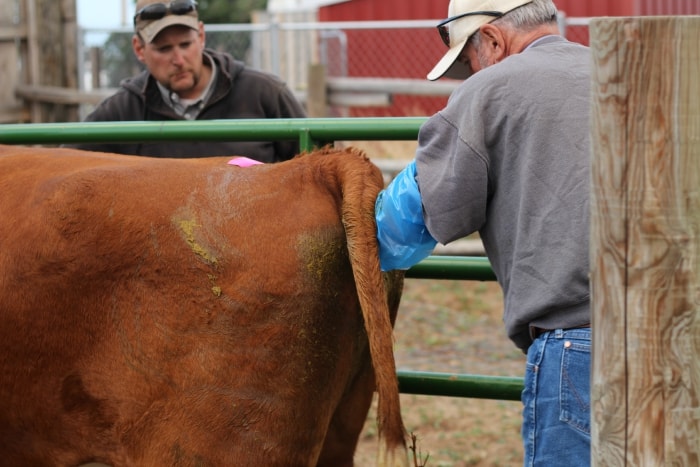
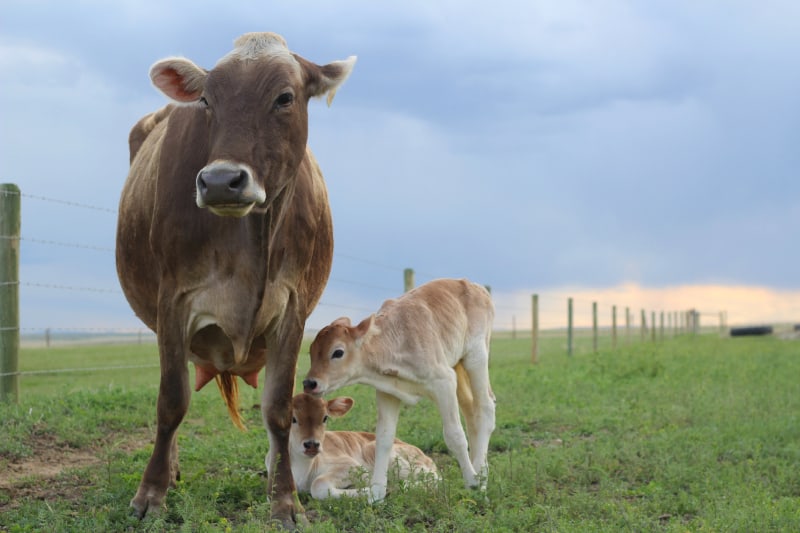
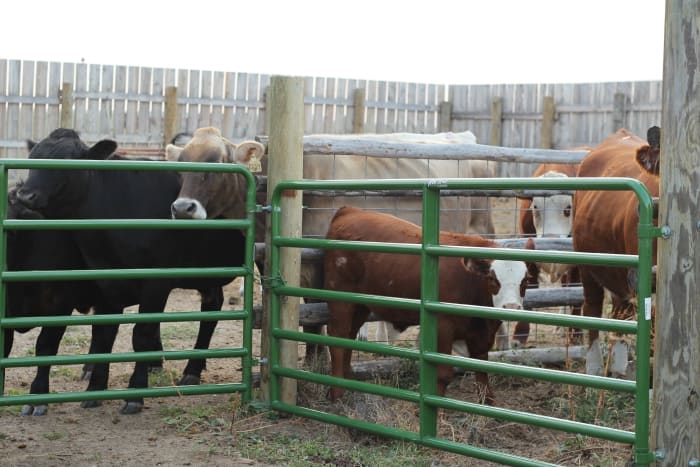
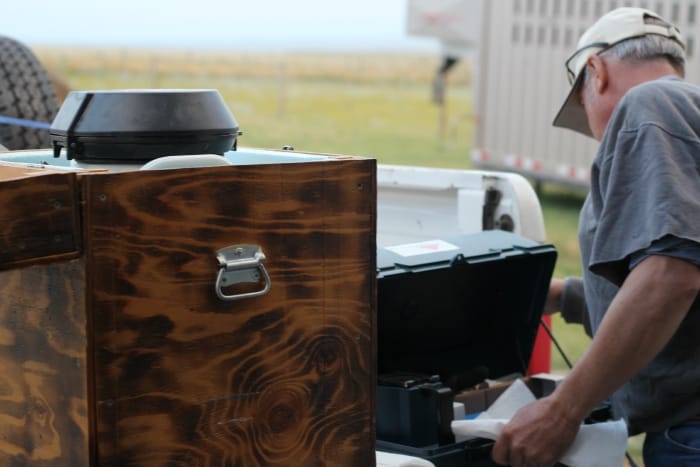
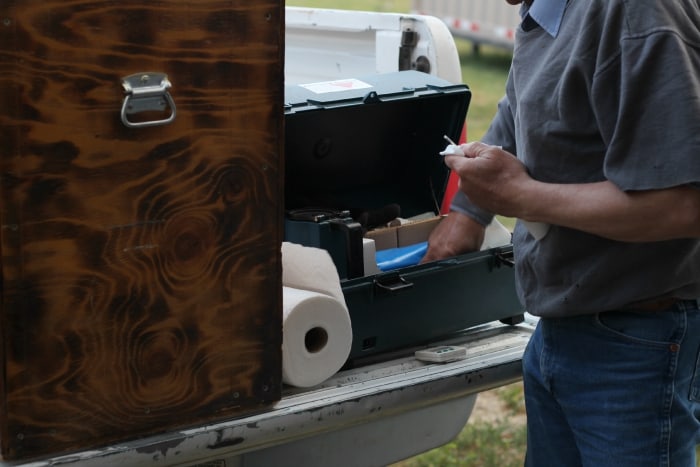
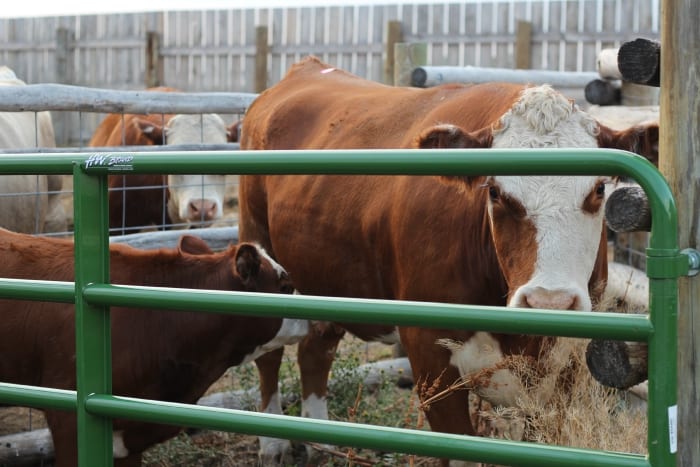
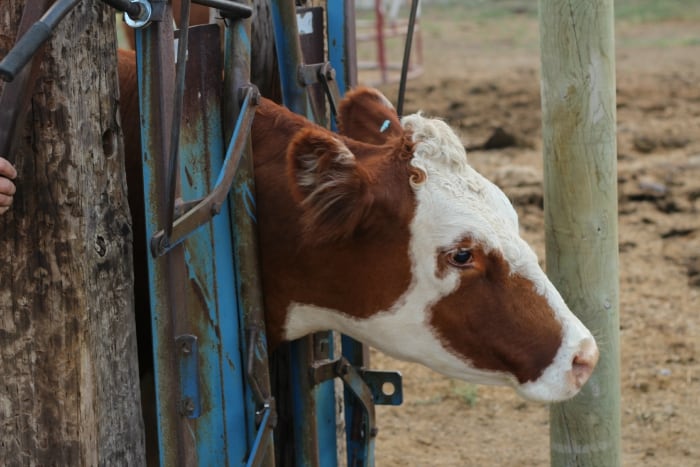
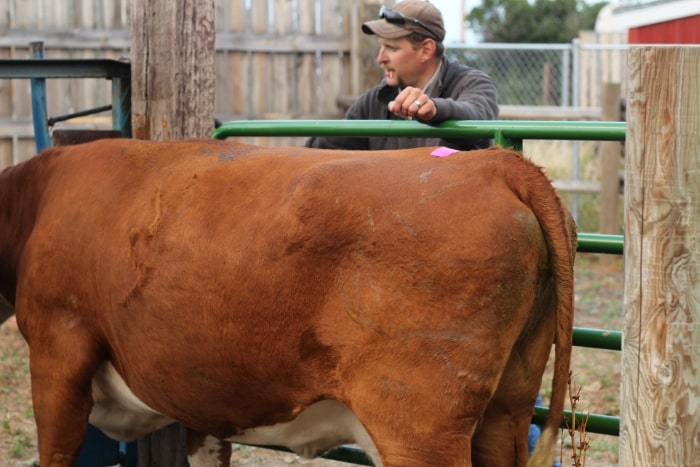
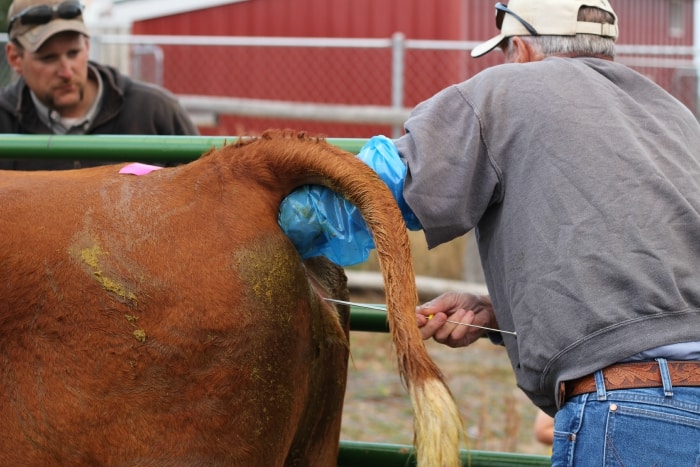
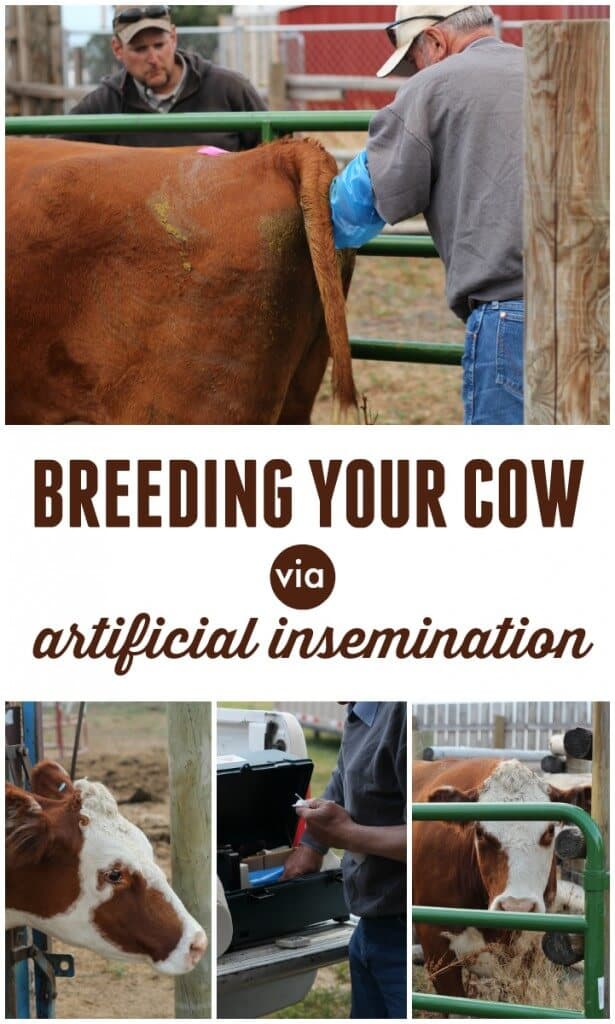


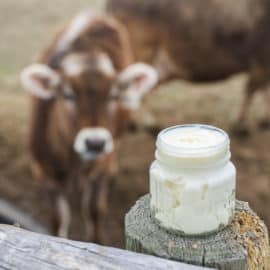
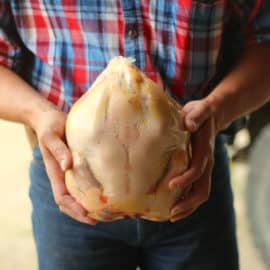
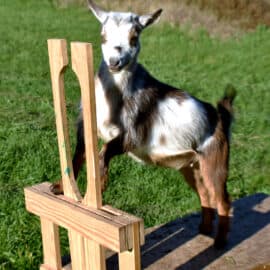
I tried AI on a cow in high school. I got extra credit, the benefits of growing up in an ag community. 🙂
How cool is that?!
My hubby does A.I.
Hi. I found this page by accident. I’m looking to start a brown swiss herd. Do u have any for sale?
I must say I’m impressed. I ran across your blog by accident while doing some research for our operation. Honestly, I was afraid you were babbling on about a subject you weren’t very educated in, spreading misconceptions of how things worked. (Yes, I read a lot of blogs like that!) I applaud you for the way you have described the process. You’re very much correct!
I am the AI tech on our family farm and take care of roughly 800 head of dairy heifers, from just weaned to breeding age, so I’m somewhat familiar with how the operation works too. Glad you are helping those seeking the knowledge to do it right, and please keep up the good work!
Best of luck in your operation, and Merry Christmas!
Awesome content! Thanx!!
Are there any food restrictions after AI procedure? I’ve been advised to NOT feed “Cattle-Mix” for 21-days after AI-procedure, and since it will impact the energy-levels in cow, I’m not buying the 21-days rule. Any advise?
Thank you for this post! We want to get our own milk cow in the future and know that she will have to be bred in order to produce milk. However I’m not sure about having a bull just for that purpose! What are the estimated costs involved for purchasing the semen and to have some do the AI?
If you are going to have one cow it’s best to have a tect do it. Having your own will be to costly for oeuvre cow so to hire it would be best. The cost will very depending on the company you use but will cost around 30 to 40 to breed on the cheaper side
For us our tech lives 40 min away. He charges $50 or $40 for a rebreed. The semen straws for dexter cattle which we have cost $25-100/straw. It cost $120 to have whatever number we ordered shipped to our tech-we purchased 8.
Hello, I am wondering what your resource is for finding frozen semen? Do you use a particular farm or is there a website where there is a marketplace type database? Thanks for the post!
There are storage facilities that keep straws–they are spread throughout the country (USA and I am guessing other countries too). Some straws are held privately and others the facility owns and sells. The further the straws ship, the higher the shipping cost. I bought mine from Hoffmans in Logan Utah. They had several bulls of the breeds, Dexter and mini jersey, I was looking for. If you buy from a private party, you pay them and then they notify to storage facility to release the straws to you. What breed are you looking for?
There are storage facilities that keep straws–they are spread throughout the country (USA and I am guessing other countries too). Some straws are held privately and others the facility owns and sells. The further the straws ship, the higher the shipping cost. I bought mine from Hoffmans in Logan Utah. They had several bulls of the breeds, Dexter and mini jersey, I was looking for. If you buy from a private party, you pay them and then they notify to storage facility to release the straws to you. What breed are you looking for?
Hi,
Do you kill the calf for veal? After how many weeks? How long does the calf spend time with it’s mother?
Maha
A disclaimer here: I am vegan and an animal rights activist. I find a lot of the animal stuff you do here quite evil and disgusting. I am however open to ideas about plant-based homesteading. So I do look at your posts.
Mana- So I’m curious, since keeping animals is “evil” what do you fertilize your vegetables with? Synthetic chemicals? I’ll take my humanely raised and butchered meat over that any day!
Comparing “synthetic chemicals” to slaughtering a cow is nearly as ignorant as you calling it “humanely raised”. If I had a penny for every meat eater excuse…
Humanely butchered. Fascinating combination of words, don’t you think? And please investigate vegetable compost. You’d be amazed!
No, we don’t raise veal. Our calves stay with their mothers until they are at least 7-8 months old, but often longer. We don’t harvest our meat animals until they are 18-24 months old. We don’t ship to feedlots. They get to live on green grass and pasture and fully enjoy being a cow their entire lives.
Hi, just found your site. I like it. I am an old school farm boy who worked away from the farm and bought 80 acres when I retired. Over the last 3 weeks I’ve bought 3 bred heifers and a 3 year old Brown Swiss who had a calf last spring. They tried AI once and missed it. My neighbor and I are running cows on our combined 160 acres, I feel the Swiss was in heat the day I picked her up let her loose on our farm and will have an Angus calf next year.
I am very interested in AI and would like to use it in the future, I have a Maine Anjou bred to a dexter bull, a Hereford x Dutch belted bred to a hereford and a Brown Swiss x angus bred to a balancer bull. Sounds like a UN meeting but they were that way when I purchased them. The Brown Swiss spent the summer in the Deanna Rose children’s dairy exhibit this past summer being milked twice daily. Her AI did not take and she was not exposed to any bulls.
After this year I would like to try AI for the Maine Anjou and the Brown Swiss and perhaps the Dutch Belted. I’m going to join and follow your post please keep us posted on the AI success and calves of the procedure.
I mentioned old school farm boy, both my parents worked and raised us on a farm like it was the depression. We had a huge garden and Mom canned, we raised lots of chickens and processed them, same with hogs. We had 2 dairy cows, a Jersey and a Guernsey. I had to milk both by hand every morning and get the milk ready for pickup. Then run to meet the school bus.
Jill its the same on my farm. They need to run and play in the grass and sun shine. I love watching them.
Maha… I refuse to eat veal because of how the calfs are kept. They can only stand up and sit down. Half the time their laying in their own poop.They pen them up the way they do because they don’t want them moving around too much to keep the meat tender.Their fed a straight milk diets.
I won’t eat veal for the exact same reason. People should be educated about this.
you are a disgrace the world you burnt piece of celary
how do you know this you dont. So actually come to a ranch to see what really happens
What a great post! We have two dairy goats and a wether. I’m kinda in the same position, I think it’s silly to have a buck just to bred two does every year or two. I’ve looked into AI before but I’m having trouble tracking down someone in my area who will perform them. Would you have any suggestions?
I am having this same dilemma and have goats. I am wondering if you couldn’t post on craigslist? You could also check with some vet clinics to see if they do AI, that way all you would need to do is buy the straws? Good question and awesome article for this blog!
Check with your local vet– sometimes they will do it or will know of techs. 🙂
We were having trouble finding a buck to breed our does also. I was able to track down a buckling from a nubian breeder. She wasn’t going to register him so we got him for $50, he’s a really nice looking little guy. We are going to use him this year and after he has done his job we are going to butcher him and have some nice goat meat. We only have a little over an acre so it doesn’t make sense for us to keep a buck year round, especially not after they get really big and smelly. 🙂
Sorry can’t help myself. Buckling??? LOLOL its a buck…period. The girls are does or nannies. A whether is has been castrated. Oh by the way if you’ve never been around a billy, unless the glands on his head have been removed, they STINK!!! You’ll smell them before you see them. Its awful, but the ladies think its divine.
Hello, is it still economical to purchase straws if you only have one cow? I’m in Wyoming and our cow just had her 3rd calf but it is always a job to find the right rancher with the right bull who will take one cow. Right now we use a friend’s bull but her first calf was beefalo. We just butchered him and it was so wonderful we want to repeat that but can’t find another beefalo bull.
-Kate and James 120 Acre Wood (YouTube channel)
Your guys best bet is to see if you can use or borrow one. A.I a goat isn’t as easy as a cow. My parents milked 330 of them. We did everything natural.
You don’t have to buy a billy. Find someone who has a billy. Rent a billy? LOL You watch for the signs of heat and take your girls over or they will bring the billy to your girls. I’m no beginner where goats are concerned. I am 56. I’ve been raising goats since I was 16. I am in Idaho now. Was born and raised in California?
My dad has 6 cows that he breeds yearly. So what he does is “rent” a bull for 3 months and when the three months is up the bull either gets dropped off at the next farm on the list or brought back to the owners farm. It works out great for those who have a handful of cows but don’t won’t to keep a bull full time. And the bull is kept busy 🙂
Yes, renting is a great option too!
I’ve been waiting for this post! I can’t tell you how much I enjoy reading about your life. I’m having my guernsey heifer AIed next week, so your post was perfect timing. I bought sexed semen so there’s a 95% chance she’ll have a heifer. Let’s just hope she takes!
you should sell your twin calves-when you have twins one won’t breed and you don’t know which one it will be. I grew up on a dairy farm-my dad never kept twins
Since both of these were heifers, it shouldn’t be an issue. However, when you have mixed sex twins, the heifer IS usually infertile, which is a bummer.
What your referring to is called a free martin. If you have two girls or boys thats fine. But if you get a boy and a girl.. you won’t be able to breed her. She is born with both male and female reproductive organs.
Who’d have thought an article about AI for Cows could be so fascinating lol! While we aren’t at this point in our lives I really enjoyed learning about it. I’m wondering if you’ll get twins again next year? Are cows like humans where some are more likely to have twins than others?
I’m doubtful we’ll get twins again– it was sure fun this time around, though! 🙂
Thanks for posting this Jill. I’ve had 3 dairy cows (singles not together) over the years, but the first one was old, second one was mean so when I purchased the third one about a month to six weeks ago I made sure to do my research first… and get a 12 – 15-month year old, and now it’s time to breed! Oh this is such an adventure! Feel like I’m over my head.
Wondering if since I don’t have a headlock if I should empty the garden shed and use it as a “dark box” (aka breeding box)… or if you think a first time breeding on a 43″ mini-midsize jersey would be OK to just tie up??
If she’s gentle, you can just tie her up– we’ve done that before. 🙂
We have a Guernsey heifer and would like to know where you got the semen, as we only have one heifer on about 15 acres and don’t want to buy a bull. We believe she has been in heat just recently based on what I researched on the web.
We have a neighbor who is an AI Tech. He works with Accelerated Genetics and we order it from them through him.
Please tell me, I don’t cross or insemination of my cow from last 6 months after giving birth to a baby. The gap is big. Will it be harmful for my cow any how?
Hi Jill,
We are about to go through this with our cows and was wondering how many straws you usually order for each cow?
Thanks!
I’m currently working on my own blog, you are very inspiring!
So the poor cow never gets to have sex?
You mean the free martin? Nope. They really don’t care until they start cycling. If you see them mounting other cows, mooing all the time, then they care. Be careful. They will try to mount you!!
How many straws per cow should I order?
My milk cow is super easy to detect standing heat. She will beller really loud every minute or two for 12 straight hours. And the pen she’s in at night is about 5 feet from my bedroom. So if she comes into heat at 2 am, I know about it. Lucky me. Haha. She is usually a quiet cow.
The heat cycle is actually 36 hours. The first 12 hours, she will mount another cow if she’s in heat. The second 12 hours, the other cow will mount her. The third 12 hours, she will mount another cow. It’s actually good to breed her at the first 2 hours of the third 12 hours. I think lots of people breed them way too soon. I like to mark on a calendar whenever her second 12 hours starts. This way, I can have a good idea how long her cycle is, and can easily predict it when we get ready to breed. We’ll get her bred one day, whenever we get the squeeze shoot fixed.
We were “gentlemen” farmers; which means my husband had a job but we enjoyed our farm very much. We AI’ed our Polled Hereford for a “Beefalow”. Meanest calf we ever raised. but..he was fed only pasture grass and was the most tender meat we have ever eaten. He was so mean; got out, and had to have our neighbor field kill him. Took him 3 weeks. The neighbor really didn’t want any meat because he said it would be tough. We convinced him to take some and he also said it was so good. My hubby was never home when the AI guy came so I got to watch the process. I seem to remember he came and gave our cow a shot beforehand to make sure she was in heat and then came back to do the AI. We are now in our middle 70’s and live in town but have such sweet memories of our farm.
I love Beefalo!!
You ought to take part in a contest for one of the best websites online. I most certainly will recommend this site!|
fake bulgari snake watch http://www.go0.co/
You probably use manure. Its plant based. If you want to be Vegan fine. Just get out of my way so I can enjoy my hamburger in peace!!! And yes I want fries want with that!!
I don’t believe God made animals and told Noah to build an Ark; to be Evil or disgusting! “Beef it’s what’s for dinner!” At my house!
Ryan Phelps. West Texas
Hi. I found this page by accident. I’m looking to start a brown swiss herd. Do u have any for sale?
How do we post comments on your videos?
You need to click over to Youtube to leave on a comment on the video itself.
I can’t find how to do it on YouTube , just wanted to say that lemons don’t like stuff around their base. So don’t plant anything with it. They do like Epsom salts occasionly.
Hi,
Am just helping my friend to get a good breeding(insemination s)
I just want to know if we can shipping those to Tanzania??
If yes how much will it coast??and what is the name of the breeding seed for cow??
Stumbled on this post while preparing to breed my sons 4H project heifer, Daisy (ours is nice, she deserves a name). Very informative and helpful. I will be checking out more of your posts!
Hello, I am wondering what your resource is for finding frozen semen? Do you use a particular farm or is there a website where there is a marketplace type database? Thanks for the post!
My Jersey Heifer was out with a bull all summer. She came home and has now gone into heat twice.
Do you think AI in November is too late in the year? That will put her having a calf in August next year.
Otherwise I will have to wait till June to try again and go another year without milk.
Your thoughts?
Thanks!